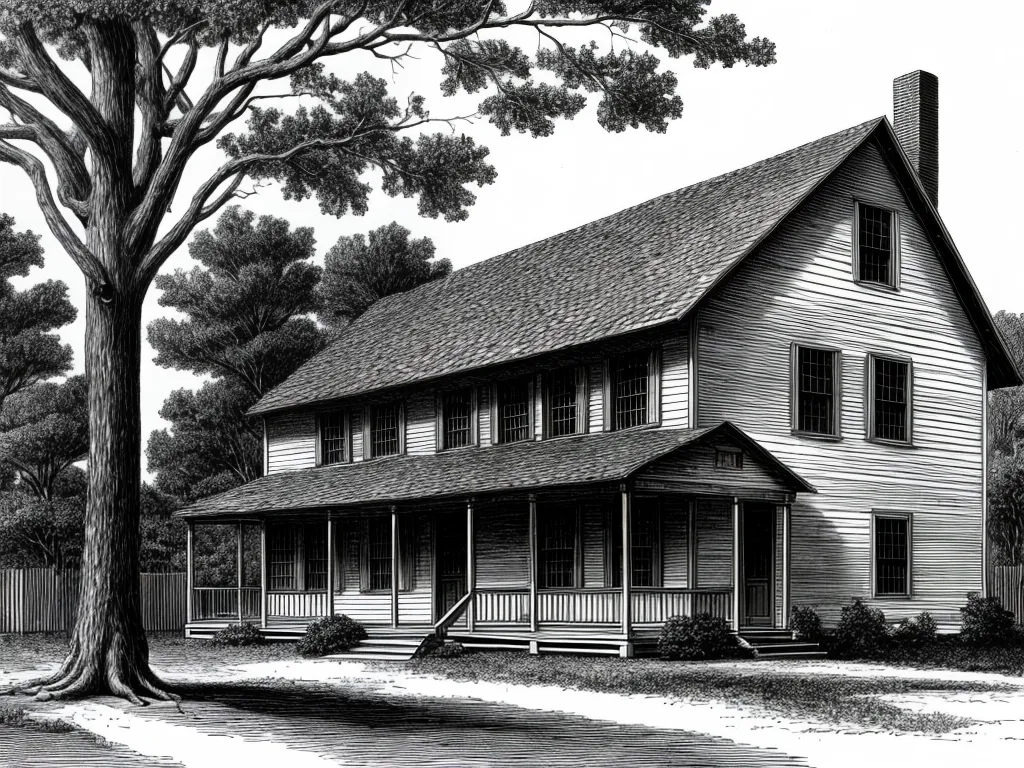
Prior to the widespread availability of electricity in the early 20th century, American homes relied on more primitive methods for lighting and power. Despite lacking modern electrical wiring, early Americans were quite ingenious in devising ways to route energy through their homes. This article will explore the various methods used for wiring early American houses before the electric lightbulb became commonplace.
Gas Lighting Illuminated Homes Before Electricity
Gas lighting was one of the most popular forms of interior lighting in American homes during the 1800s before electricity. Natural gas stored in tanks was piped through homes via copper, iron, or lead pipes. The gas was then burned to produce light from fixtures called gas lamps or gasoliers.
I always found it fascinating how gas lamps provided warm, bright light by simply channeling flammable gas through the home. This seemingly dangerous practice was a vast improvement over dim candlelight or oil lamps. The soft glow of gas lamps became a regular feature in parlors, libraries, and dining rooms.
Gas lighting offered many benefits over older lighting methods:
- Brighter and more consistent illumination than candles or oil lamps
- Did not produce smoke or soot like oil or wood burning lamps
- Allowed lighting fixtures to be installed on walls and ceilings
- Could be easily switched on and off with the use of valves
Of course, safety was still a major concern with open flames burning inside the home. Proper ventilation was critical to allow noxious fumes to escape. Occasional gas leaks led to deadly explosions. But when operated properly, gas lighting allowed early American homes to be brightened up in ways never before possible without electricity.
The Ingenuity Behind Gas Lighting Distribution
Distributing gas safely throughout a home required clever solutions. Typically, the gas lighting system consisted of:
- A gasholder or storage tank
- A pressure regulator
- Piping distributed through walls and ceilings
- Light fixtures (gas lamps, chandeliers, wall sconces) with burners
I'm amazed by the innovation required to route gas and vent fumes throughout a home without it exploding! Let's look at how each component worked together:
The gasholder stored and pressurized the gas, typically coal gas produced at special plants. It was positioned away from the home for safety.
The pressure regulator controlled the gas pressure to ensure steady flow to the lamps. Too much pressure caused flickering flames, too little caused dim light.
The piping snaked up walls and across ceilings guiding the gas to different rooms. Joints were threaded and sealed with compounds like hemp and litharge.
The burners on each fixture mixed gas with air to produce an efficient flame. Chimneys, shades, and globes helped direct the light while venting fumes.
This rather complex system shows how homes met their lighting needs without any access to modern electrical power.
Non-Electric Home Wiring for Communication
In addition to lighting, early homes also had a need to communicate within the house and to the outside world. This required a form of wiring for:
- Calling servants
- Announcing visitors
- Security alarm systems
- Later on, telephones
Special bell pull communication systems were popular in wealthy homes during the 18th and 19th centuries. Wires were run throughout the walls with pull cords in each room. Occupants could ring bells in other rooms by tugging the right cord to summon servants.
The wiring was extended outside to ring bells or gongs announcing the arrival of visitors. It essentially served as an early intercom and doorbell system.
Later on, this wiring allowed for the installation of home telegraph machines and early telephones. These non-electric wiring systems laid the groundwork for wiring communication networks within the home.
Transitioning to Electrical Wiring
The late 1800s saw electricity become more widely available from private generating plants. By the 1920s, most urban American homes were switching over to electric lighting systems powered by central utilities.
Even once electricity became available, the transition was gradual due to the high cost of wiring a home. Fixtures were often dual-purpose, adapted to burn either gas or electric. Slowly, rooms became fully electrified with much safer and more efficient lights.
Electricity brought with it the need for proper insulation, junction boxes, and safety fuses - forming the basis of modern electrical wiring. The use of gas lighting faded as homes became brightly and cleanly lit with Edison's new incandescent bulbs.
This shift to electricity drastically changed how homes were designed, allowing lighting anywhere without hazardous gas pipes. The ways we power, communicate, and illuminate our living spaces were forever changed thanks to this remarkable energy source.
When touring old homes, I always appreciate seeing antique light fixtures and doorbell systems. It reminds me of the ingenuity required to route energy throughout a home before electricity became ubiquitous. The methods devised to wire early American houses laid important groundwork that still shapes how we live today.